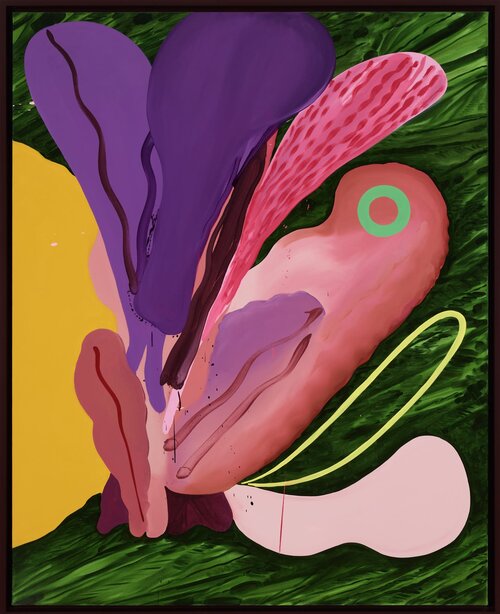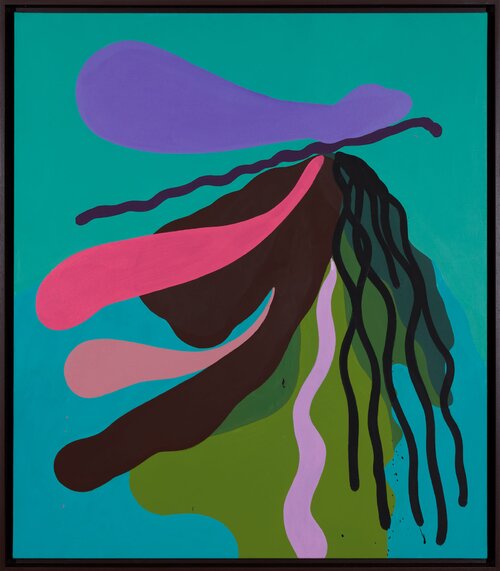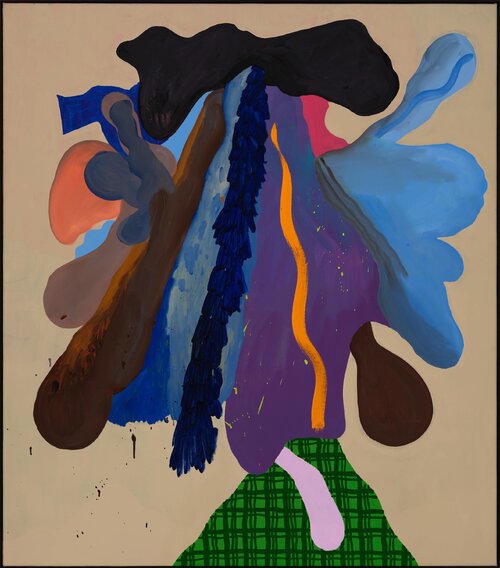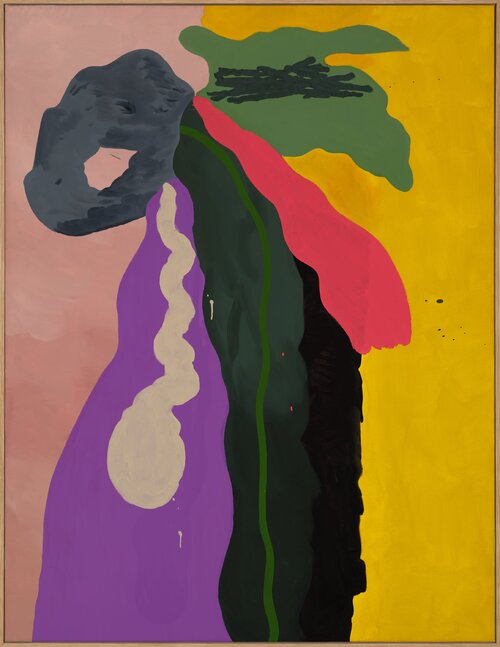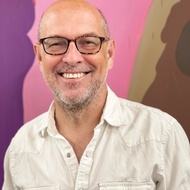
Les Rogers
United States (1966)Colourful, life-size canvases to lose yourself in
Like a reporter, Les Rogers aspires to portray contemporary society. While to this end he used to look mainly at the world outside his studio - making, for instance, an entire show around a teenage girl on Myspace and thus capturing the start of social media as a phenomenon, since becoming a father he departs much more from his more intimate circle. 'During the pandemic, my children were constantly in my studio in a former school in New Jersey. So I started looking at the world more and more through their eyes. It's refreshing how they deal with abstract concepts like good and evil, or beautiful and ugly, for example. In a child's world, anything can be a terrifying monster or cute little creature. Moreover, it is fascinating to see how they develop as individuals,' says Les Rogers.
This shift in content translated formally into simplification. 'While my canvases used to look much more chaotic as a reflection of the world, I still paint many different subjects, but recently I focused mainly on a series of playful portraits in bright, pure colours. Because they are not immediately so legible, viewers can lose their imagination in them. For the same reason, I always paint in a large format. I want my paintings to have a three-dimensional presence in space, and for you as a person to really immerse yourself in them. In that sense, they also have a sculptural dimension for me,' Les Rogers says.
'That sculptural aspect is reflected in a series of organically shaped canvases. In those earlier works, I painted completely abstract and with a lot of texture. Whereas in my current work with oil on canvas, I paint a smoother - and thus more vivid, but also realistic - scene. Although I do want people to see that it is handmade. This directness of form and content is reflected in titles such as 'Hero', 'Real' and 'Talker'. These refer, for example, to child-inspired questions around what is real or fake, or who can be called a hero.'
Physical impact
Each new work starts immediately on the canvas, a preparatory sketch does not come into play. 'With my whole arm, or even body, I put a big movement on the canvas first. I attach great importance to the physical impact of that brushstroke. In that sense, I feel a strong kinship with the abstract expressionists, especially Willem de Kooning,' Les Rogers says. 'I regularly wonder during the painting process how someone like De Kooning or Pablo Picasso would proceed, and that gives me the energy to make the right choice.'
'I also like to be inspired by more conceptual art, by the likes of Martin Kippenberger, Mike Kelley or Paul McCarthy. I am also fascinated by someone like Richard Prince, who flouts the laws of art. I know I can paint a perfect face, but I don't want to make illustrative art. I want to experiment. The unexpected things that happen, or images that emerge, make it fascinating.'
In his spacious studio, Les Rogers works on about six canvases at a time each time. 'I constantly alternate between one work and another. This proximity encourages dialogue between the different scenes. Just like a musician makes an album and brings a certain rhythm into it, my paintings complement each other. At the same time, I highlight their individuality by working with different colour accents. For that use of colour, I like to be inspired by Paul Cézanne and Henri Matisse. Not only the number of colours, but also their interaction with each other is crucial for creating the right atmosphere.'
